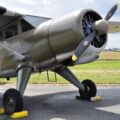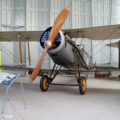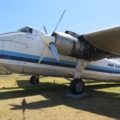
Bristol Beaufort | |
|---|---|
| Country | UK |
| Role | Torpedo bomber |
| First flight | 15 October 1938 |
| Built | 1121 |
The Bristol Beaufort (manufacturer designation Type 152) was a British twin-engined torpedo bomber designed by the Bristol Aeroplane Company, and developed from experience gained designing and building the earlier ***. At least 1,180 Beauforts were built by Bristol and other British manufacturers. The Australian government’s Department of Aircraft Production (DAP) also manufactured variants of the Beaufort. These are often known collectively as the DAP Beaufort. More than 700 Australian-built Beauforts saw service with the Royal Australian Air Force in the South West Pacific theatre, where they were used until the end of the war.
Source: Bristol Beaufort on Wikipedia
| Bristol Beaufort VIII Walk Around | |
|---|---|
| Photographer | Cees Hendriks |
| Localisation | Unknow |
| Photos | 25 |
Related kits:

| Bristol Beaufort Mk.VIII Walk Around | |
|---|---|
| Photographer | Michael Benolkin |
| Localisation | Unknow |
| Photos | 24 |
Find kits on eBay:
The Bristol Beaufort was a British twin-engined torpedo bomber designed by the Bristol Aeroplane Company in the late 1930s. It was used by the Royal Air Force and the Fleet Air Arm during the Second World War, as well as by several other countries. The Beaufort was derived from the earlier Bristol Blenheim light bomber, but had a longer fuselage, a larger tailplane and a more powerful engine. The Beaufort was capable of carrying a 1,600 lb (726 kg) torpedo or up to 2,000 lb (907 kg) of bombs. It had a crew of four: pilot, navigator/bomb aimer, wireless operator/air gunner and dorsal turret gunner.
The Beaufort first flew in 1938 and entered service in 1940. It was initially used for coastal patrols and anti-shipping strikes in the North Sea and the Mediterranean. It also participated in the Battle of the Atlantic, attacking German U-boats and escorting convoys. The Beaufort was later adapted for other roles, such as mine-laying, reconnaissance and night intruder missions. Some Beauforts were also converted into transport aircraft or trainers. The Beaufort was eventually replaced by the more advanced Bristol Beaufighter, which used the same basic airframe but had more powerful engines and heavier armament.
The Beaufort was exported to several countries, including Australia, Canada, South Africa and Turkey. The Australian-built Beauforts were used extensively in the Pacific theatre against Japanese forces. The Beaufort was also produced under licence in Turkey until 1944. The Beaufort was praised for its versatility and reliability, but also criticized for its low speed, poor manoeuvrability and vulnerability to enemy fire. A total of 2,138 Beauforts were built during the war.
Views : 2786









